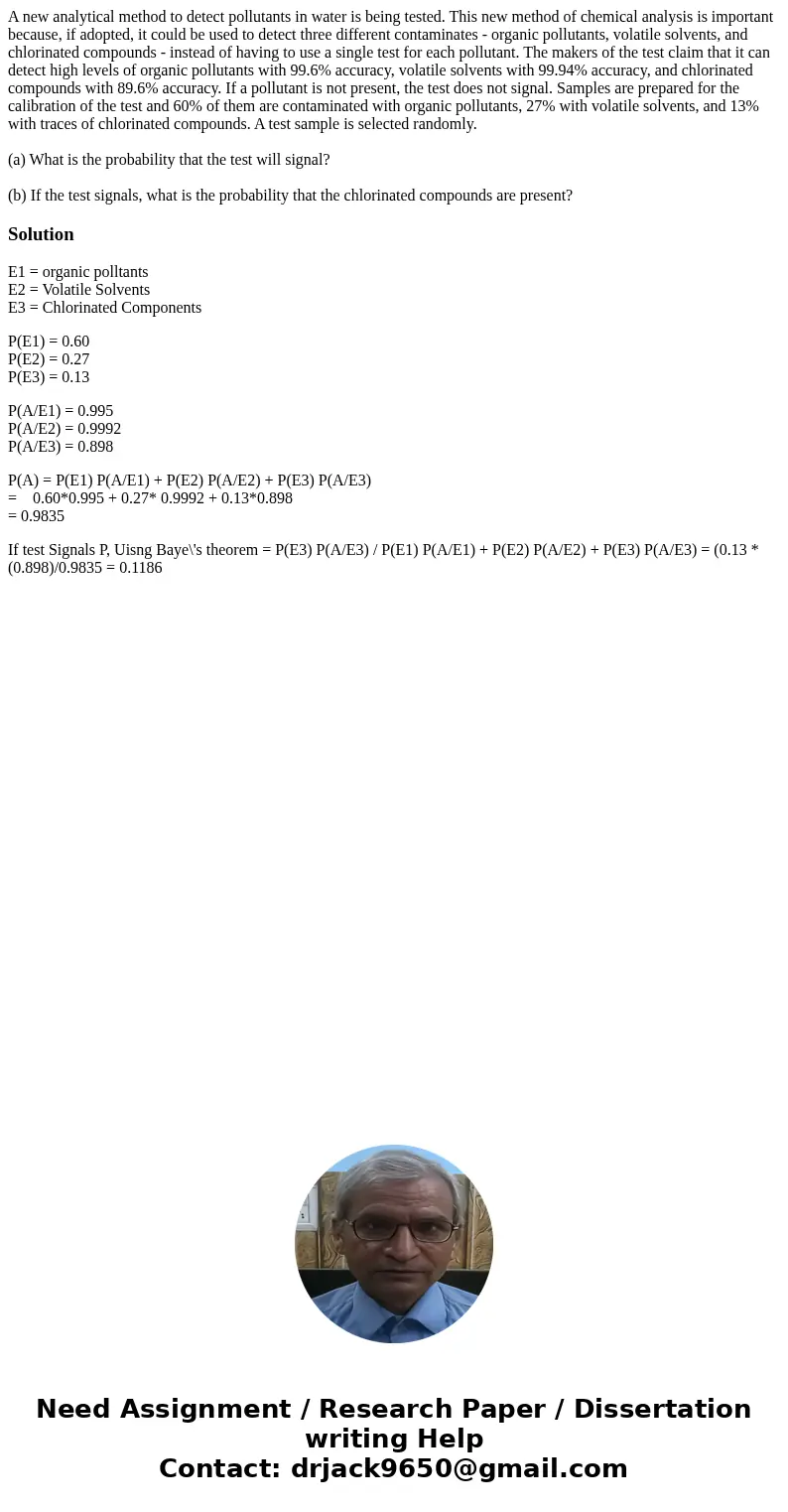A new analytical method to detect pollutants in water is bei
A new analytical method to detect pollutants in water is being tested. This new method of chemical analysis is important because, if adopted, it could be used to detect three different contaminates - organic pollutants, volatile solvents, and chlorinated compounds - instead of having to use a single test for each pollutant. The makers of the test claim that it can detect high levels of organic pollutants with 99.6% accuracy, volatile solvents with 99.94% accuracy, and chlorinated compounds with 89.6% accuracy. If a pollutant is not present, the test does not signal. Samples are prepared for the calibration of the test and 60% of them are contaminated with organic pollutants, 27% with volatile solvents, and 13% with traces of chlorinated compounds. A test sample is selected randomly.
(a) What is the probability that the test will signal?
(b) If the test signals, what is the probability that the chlorinated compounds are present?
Solution
E1 = organic polltants
E2 = Volatile Solvents
E3 = Chlorinated Components
P(E1) = 0.60
P(E2) = 0.27
P(E3) = 0.13
P(A/E1) = 0.995
P(A/E2) = 0.9992
P(A/E3) = 0.898
P(A) = P(E1) P(A/E1) + P(E2) P(A/E2) + P(E3) P(A/E3)
= 0.60*0.995 + 0.27* 0.9992 + 0.13*0.898
= 0.9835
If test Signals P, Uisng Baye\'s theorem = P(E3) P(A/E3) / P(E1) P(A/E1) + P(E2) P(A/E2) + P(E3) P(A/E3) = (0.13 * (0.898)/0.9835 = 0.1186

 Homework Sourse
Homework Sourse